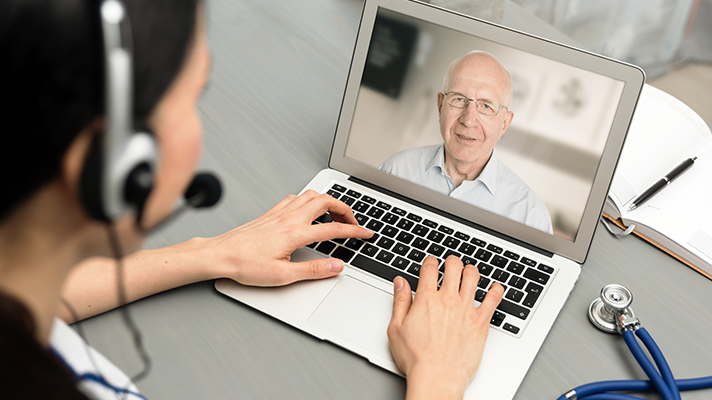When it comes to the billing of telemedicine it can be quite a tricky endeavor therefore it must be handled carefully and with the pandemic taking the world by storm, tele-health clinics have been making twice the effort to normalize everything. The guidelines for a proper telemedicine billing process are still underway. It is up to the payer what rules they will follow since they tend to differ from every other payer out there.
But do not fret since this telehealth billing guideline applies to all the payers out there. There must be several questions in the minds of Tele-Health clinics and healthcare providers since there are many details that need to be taken care of. Questions such as how must the telemedicine be billed? What are the medical codes that must be used? How will the process of reimbursement work for telemedicine? What are the various restrictions that one must be mindful of? If you are looking for answers to any of the above questions – you need not look anywhere else but here. Keep on reading to find out every little detail about tele-health billing and coding.
Things To Know About Before Billing For The Tele-Health Services

Several details need to be taken care of when billing for telehealth services. Since the world of telemedicine is a tricky one there are many details that one should keep an eye out for.
1. Know about all the codes that are to be included in the process of tele-health services
Centres for Medicare and Medicaid services approved a list of medical codes that are required for the process of Telehealth services. These are: (i) G2010 for the evaluation of patients’ videos or images that do not lead to E/M services, (ii) G2012 is required for check-in purposes or other kinds of communication along with the healthcare provider that uses some kind of virtual technology, (iii) G2061 – G2063 was established for different services such as management and assessment provided by a healthcare professional who is qualified, (iv) 99421-99423 offer online management services and evaluation services for seven days to an established patient, (v) 99441 – 99443 is mainly used when it comes to Tele-Helath services that are provided only through telephone.
2. Selecting the right kind of POS and Modifier
In recent times there has been a change that has been seen in the centre for medicare and Medicaid services provisional final rule wherein the medical coders should not make use of the POS 02 during the procedure that is included in Tele-health billing and coding. However, instead of using the regular form CMS-1500, the medical coders must ensure to enlist the POS, which is to be used where there is no PHE available. For instance, the medical coder during the Medicare telehealth services must use POS 11 if it turns out that the beneficiary was seen by the medical provider at the clinic.
According to the Centres for Medicare and Medicaid services, the correct kind of modifiers that are to be included in the amends for billing of Telehealth services are as follows:
– 95; This ensures that video and audio technology is used to provide all of the Tele-health services
– G0; When there are symptoms that seem of an acute stroke, the diagnosis, evaluation and treatment are to be made with the aid of Tele-health services
– GT; Interactive visual and audio technology must be used to offer all of the necessary Tele-health services
-GQ; Services under the section of telemedicine which is an important part of medical billing services are provided through the aid of a telecommunication system that is asynchronous.
3. Selecting the right kind of POS and Modifier

One of the major reasons why Tele-healthn clinics always find themselves losing revenue is because of incomplete and inaccurate medical documentation. Several different factors are considered when one talks about the right method to be followed during the medical documentation and coding for all the reimbursement of the medical services. For example, the medical codes are different in visual and audio telecommunication tools that are used majorly during the service. Moreover, the medical provider’s diagnosis, treatment and findings can change the medical coding of the service.
Any video consultation that makes sure to provide a face-to-face visit must be included in the medical billing document aside from the medical codes, the date and the platform that is used. Similarly, if any patient receives consultation via email, telephone or any other kind of audio tool it must be categorised under non-face-to-face services. It is also an important factor to understand that the service which was provided must have the date of when it was provided.
Things To Remember Before Wrapping It All Up
To make sure that all the guidelines are followed through and through without any hiccups, Tele-health clinics must ensure that the outsourcing Tele-Health coding and billing system is done impeccably. Any medical billing company that is proficient enough can make sure to conduct focused and periodic audits to authorize the clinic about filing the medical documentation correctly and comply with all the necessary guidelines that have been revised under the medical billing services.
Also, it is crucial to understand that sometimes the guidance that is taken from the expert medical coders and billers with all the necessary updates on rules of Telehealth billing is always a plus since it helps you give an insight on the majority of the things that are important under the healthcare industry.
Moreover, it can help in selecting the right kind of POS and modifiers while filing all of the medical claims to make sure that the reimbursement process is complete and also secures a high amount of revenue for the hospital or medical institution. Therefore, in order to ensure that the efficiency is at its best when it comes to medical coding and documentation, it is important to stay updated on all the revised guidelines under Tele-health billing and coding, and this is where a company like Synergy HCLS can help you out.


